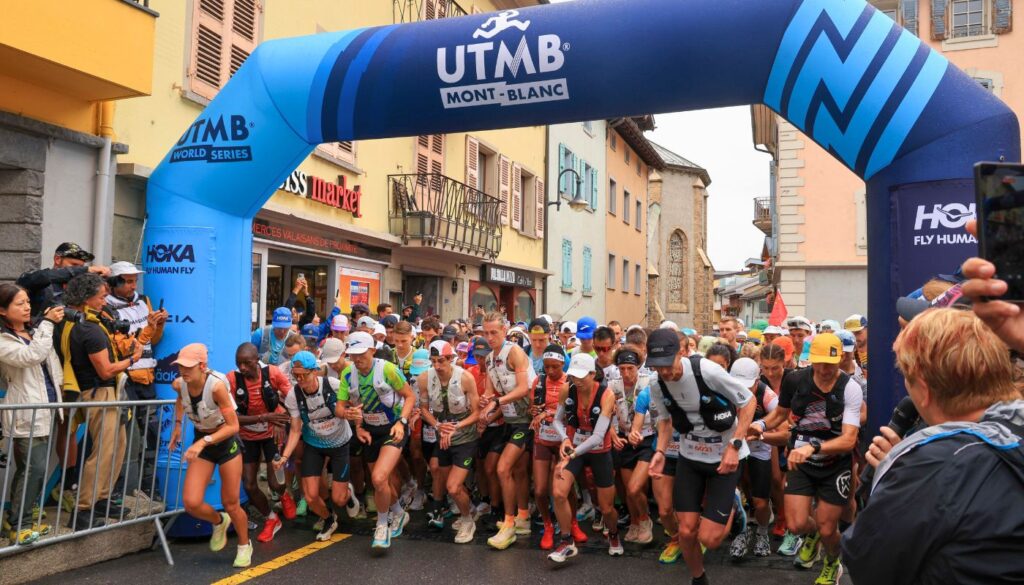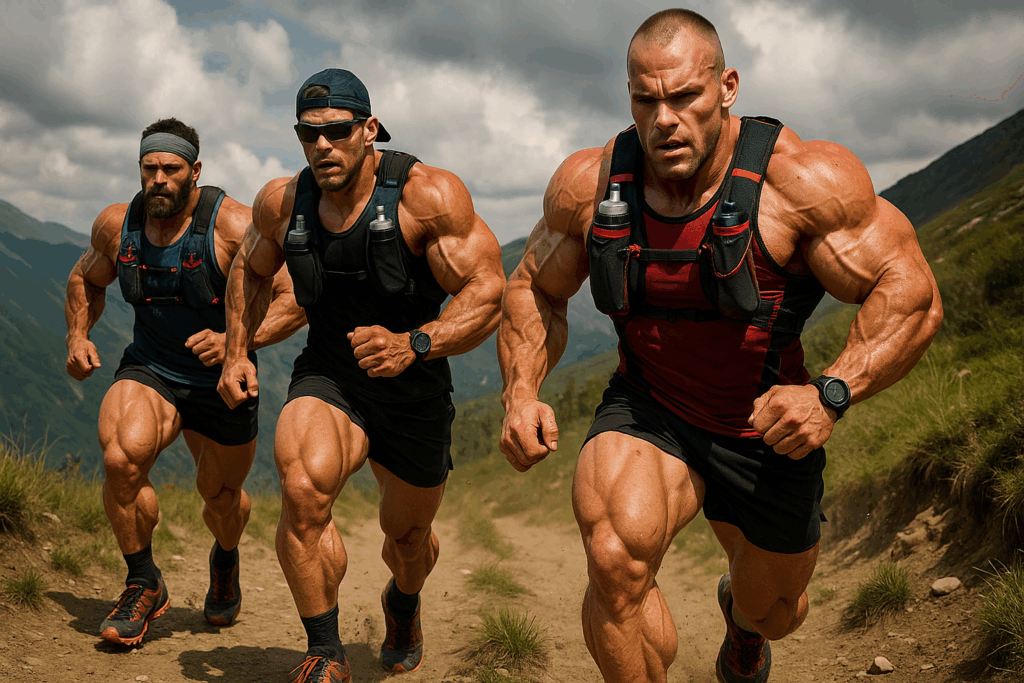Trail Running Needs More Complete Anti-Doping Controls to Be Taken Seriously
And worse yet, maybe it already does. But in reality, we have no idea because the sport lacks complete anti-doping controls.
We all know high-stakes, competitive sports are a dirty business. People have been trying to find an edge since modern sporting culture emerged in the mid-19th century, and for the past 60 years or so, doping has been prevalent in track and field and marathon running.
And when there is more at stake—more glory, more fame, and most prominently more money—the worse it is.
With the new money and global leveling up trail running is experiencing and incomplete anti-doping controls that exist, the sport is more ripe for cheaters to prosper than it has ever been. While it might not be a concern to the average trail runner, it’s crucial to the sport’s credibility at the highest level.
The recent news that Kenya’s Joyline Chepngeno, the winner of both the August 9 Sierre-Zinal mountain running race in Switzerland, and the August 28 UTMB OCC 50K, tested positive for a banned anti-inflammatory drug following an in-competition doping test is disturbing in many ways.
Is the sport at a tipping point? Yes. Is the sport rampant with performance-enhancing drugs? No, probably not. Not yet, anyway.
Given that most prominent races are doing some level of legitimate drug testing, there is hope that we’re heading in the right direction. However, there is a lot of work to be done to elevate trail running to a global stage—namely by way of regular out-of-competition testing and a pervasive biological passport program—especially as the opportunity for long-term stability, support from nonendemic brands, and the possibility of trail running being in the Olympics loom on the horizon.
With the rampant growth of trail running and the first smidge of mainstream excitement, we’re quickly becoming vulnerable to the same skeptical views of marathoning that have resulted after numerous doping violations.
The Chepngeno situation certainly exposes several key areas of concern for trail running. While every athlete should be responsible for what goes into their bodies and how they are treated, it highlights what’s wrong with the current state of anti-doping controls in mountain running and ultrarunning—not the least of which are the inequitable levels of anti-doping education and advocacy in our sport.
Chepngeno issued her own statement of apology on September 12 to explain that she had been having knee pain in the weeks before the Sierre-Zinal race and sought help from a medical clinic in Kenya. She was given an injected painkiller by a practitioner who assured her it was not a performance-enhancing drug. Chepngeno, a single mother of two young children who also supports her widowed mother, trusted the information, knowing she had to race to earn a living.
Sadly, she received bad advice and found out 10 days after her stunning OCC win on August 28 in Chamonix that she had tested positive for the synthetic corticosteroid triamcinolone acetonide, which is, in fact, on WADA’s banned substances list.
In addition to exposing the inequitable access to sports medicine advice and medical care, it also sparked skepticism and doubt about her Milimani Runners team, her coach, Julien Lyon—both of which have been tied to previous violations—and her brand sponsor, Salomon—all of which were quick to separate from her—and the inability to fully support her in her athletic journey. And why it took the AIU almost a month to render its guilty verdict is also a problem—on par with the long delays that have allowed several marathoners to continue competing before previous doping violations have been revealed.

Back in the 1990s when trail running first started to grow, it was an entirely disorganized sport, mostly a collection of disconnected one-off events in certain regions around the world. The World Mountain Running Association (WMRA) began holding short-distance (sub-ultra) world championships in the mid-1980s, but even those were mostly Euro-centric competitions.
Although the WMRA became an official partner of the International Amateur Athletic Federation (now known as World Athletics), it was just one of several race associations in an alphabet soup of organizations that emerged through the years. Others included the Skyrunner World Series, International Association of Ultrarunners (IAU), International Trail Running Association (ITRA), Ultra-Trail du Mont-Blanc (UTMB) World Series, but none was a true international governing body that set racing regulations, created safety guidelines, or put significant investment into anti-doping measures.
Drug-testing in trail running only really began in the early 2000s—the WMRA organized an anti-doping committee and began small-batch out-of-competition testing in 2007—but most of it started by way of individual races selectively testing a small number of subjects or merely offering a stated threat of possible drug-testing. Then there was the Quartz program, used at times starting in the late-2010s by the Golden Trail World Series, UTMB Mont Blanc championship races and some ITRA races, which was more of a “health program” facade than it was an authentic drug-testing operation that adhered to World Anti-Doping Agency (WADA) standards.
Fast forward to 2025 and we’re only marginally ahead of the old-timey days, although more races and organizations have paid for contracted testing services that meet WADA’s World Anti-Doping Code guidelines—or U.S. Anti-Doping Agency (USADA) guidelines in the case of Western States, Mammoth Trailfest, Black Canyon Ultras, Javelina Jundred, and the Pikes Peak Marathon and Ascent—and/or partnered with the Athletics Integrity Unit (IAU) for some kind of in-competition testing.
That means there is more testing being conducted—albeit still very selectively—and, as a result, a few more runners being caught. But unfortunately, it still doesn’t mean the sport is clean or dirty.
The Professional Trail Runners Association (PTRA) has an Antidoping Working Group, headed by American runner Corrine Malcolm, has been trying to move the needle with runners, race organizations and national organizing bodies for the past several years. The PTRA has applied pressure to races to institute mandatory anti-doping education standards while also pushing for the expansion of in-competition testing and a future that includes out-of-competition testing.
“We need out of competition drug testing. Without that, it’s gonna be hard to have our sport taken seriously,” says Hoka-sponsored pro runner and PTRA member Katie Asmuth. “But athletes also need to know what’s right and what’s wrong and need to know what resources are available. But it’s different culturally around the world. From a Eurocentric or American worldview, when you have these resources at your fingertips and have mentors that are versed in what’s allowed, it’s much easier to follow the rules. But there are cultural differences in the access and understanding of that around the world.”
Those are all steps in the right direction, but one of the biggest challenges is that we still don’t have an all-in international governing body for trail running.
World Athletics, which governs road running and track and field, is sanctioned to be the official governing body of trail running according to the International Olympic Committee—and it will ultimately be the authority that would help bring it to the Olympics—but it has only started to get more involved with trail running since the launch of the first combined World Mountain and Trail Running Championships in 2022 and so far only seems to be involved with those official championships.
But with the third edition of those championships on the horizon September 25-28 in Canfranc, Spain, only a handful of athletes have been in a WADA-sanctioned out-of-competition testing protocol and probably fewer have biological passports—generally only those athletes who have come from track and field, marathoning, or Nordic skiing—that are essential to ensure an even playing field.
Getting to that level of systematic anti-doping is a must for trail running to make it to the Olympics. And yes, there’s plenty of internal debate as to whether that’s an ideal future step for the sport, but as trail running continues to grow in all of its various disciplines, it will continue to be a hot topic with plenty of forces pushing it in that direction. While some trail runners would rather have the sport maintain its independent, low-key existence, it’s going to need structure and enforcement to have credibility and the assurance of a fair playing field at the highest level.
With more money coming into trail running—more brands sponsoring trail runners and trail teams, and more runners crossing over from other sports—it will continue rising as a competitive, high-performance sport. That will continue to push the development of shoes and gear, nutritional supplements, and the science behind training. But that also likely means that there are bound to be more individuals (runners, coaches, agents, etc) willing to consider performance-enhancing drugs to get a leg up on the competition.
It’s a sad reality, but dirty players are embedded in the history of competitive running, including many who are still officially recognized and celebrated as champions and record-holders. Build it, and they will come.
“I really believe that we do need a robust, out-of-competition testing system, but that is going to take a while,” says Craft-sponsored pro runner Tim Tollefson, a member of the PTRA Antidoping Working Group and proprietor of the Mammoth Trailfest. “We need all stakeholders in on this—events, series, agents, athletes, and brands. Because collectively, if we share that burden of cost, I think we can actually create something that’s lasting. I’m an eternal optimist, but I also recognize that there’s always going to be people exploiting the systems. And I think if we get ahead of that, it prevents us from maybe becoming cycling in the 1990s.”

I felt a sense of hope in reading this that trail running, in all its complexity, is here to stay. The irony is cheaters have brought a rally for honest controls which helps glue the sport. I’m thankful Brian shares some sense like this in an otherwise really big running world. See you at the top!